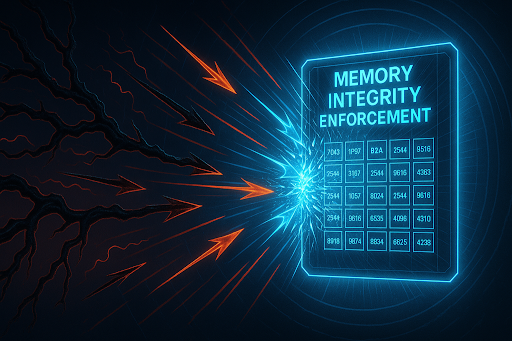LEARN
Crypto Wallet Hacked? Here’s What to Do + Tools to Use
Finding out that your crypto wallet has been hacked can be a terrifying experience. And many of us have friends, acquaintances and colleagues who have had this exact scenario play out. With billions lost annually, understanding how to react quickly is crucial.
But don’t worry — we’re here to help you stay one step ahead of crypto wallet hacks.
In this guide, you’ll learn how to spot the red flags of a hack, what emergency actions to take, and the best practices to protect your assets. We’ll also walk you through the top reasons to use the io.finnet crypto wallet — a next-gen solution that protects your digital assets in every situation.

This Article Contains
- 6 Things to Do If You Suspect Your Crypto Wallet Has Been Hacked
- io.finnet: A Powerful Crypto Wallet Solution to Help Prevent Hacks
- What Are the Common Ways in Which Crypto Wallets Get Hacked?
- 6 Best Practices to Prevent Future Wallet Hacks
- 2 FAQs About Crypto Wallet Hacks
Acting fast can make all the difference when it comes to minimizing your crypto losses. If you think your wallet has been compromised, follow these critical steps right away:
- Check All the Warning Signs
- Freeze Activity (If Possible)
- Check for Malware and Then Secure Your Devices
- Contact Your Wallet Provider and Relevant Exchanges
- Report the Hack to Authorities
- Move Your Remaining Funds to a Secure Wallet
If you suspect a hack, don’t ignore the red flags. Here are the early warning signs that can help you act quickly before more damage is done:
- Unfamiliar Transactions or Missing Funds: Unexpected crypto transfers or a sudden drop in your balance are major signs your wallet may be compromised.
- Suspicious Login Attempts or 2FA Code Requests: A hacked wallet will usually show you notifications about logins from unknown devices or locations. Also, if you receive two-factor authentication codes you didn’t initiate, it’s possible that crypto hackers are trying to log in.
- Locked Out of Your Wallet or Account: Being unable to access your wallet is a serious red flag and could mean your credentials were hijacked.
Once you’ve confirmed your cryptocurrency wallet was hacked, take these next steps:
If your compromised wallet is connected to a centralized platform or crypto exchange, freeze withdrawals immediately to prevent further unauthorized transactions. Some wallets or services may allow you to temporarily disable access or lock funds.
In some cases, malware or spyware may be logging your keys or passwords without your knowledge. For such cases, it’s best to run a full malware scan on all devices you use to access your wallet, including phones and computers.
Once the scan is complete, update your operating systems and wallet apps, and then remove any suspicious programs. Also, avoid connecting to unsecured networks to help keep your devices protected going forward.
Reach out to your wallet’s customer support team to report the issue and request assistance or temporary account suspension. If your funds were transferred to a crypto exchange, contacting them quickly may help you flag or freeze the destination wallet.
Just be prepared to provide transaction details, wallet addresses, timestamps, and any other details that could help them investigate and potentially intercept the transfer.
File a report with local cybercrime units or financial authorities, especially if a large amount of crypto is involved.
How does this help?
Having an official case number can also help if you're working with tracing firms or trying to claim insurance for your stolen assets.
If you still have access to your compromised wallet, transfer any remaining crypto to a new, secure wallet. Avoid reusing the same keys or device, as they may already be compromised.
But then, what actually qualifies as a “secure wallet”?
It’s one built on tMPC architecture, with advanced disaster recovery, no single point of failure, and much more. That’s io.finnet in a nutshell.
io.finnet offers a self-custody wallet solution that helps protect against common crypto wallet threats. Not only that — it also empowers businesses to manage digital assets directly without relying on third-party custodians.

What makes it so special?
Our platform has quickly become a preferred choice for prominent entities in the digital asset space. It’s designed to serve a diverse client base, including OTCs, cryptocurrency exchanges, market makers, and funds.
Here are the key features and benefits of io.finnet:
- Advanced Disaster Recovery: Provides options for trustless disaster recovery, allowing for immediate funds recovery without third-party interaction, using existing signers to issue a "reshare" to replace lost or compromised devices.
- Scalable Trustless Multi-Party Computation (tMPC): io.finnet is highly scalable and can be customized to fit any organization's needs, allowing the creation of unlimited vaults, signers, thresholds, and approver hierarchies to meet specific security requirements.
- Compliance and Policy Enforcement: Enables enforcement of internal policies for transfer instructions and validation, ensuring that no single employee can control all funds, thereby enhancing security.
- Web3 Access: Provides a unified interface to manage all your DeFi apps seamlessly, supporting both EVM and non-EVM chains through WalletConnect integration.
- Regulatory Compliance: Designed to comply with essential regulatory requirements like KYC and AML, adding an extra layer of security and trust for users.
- Customizable Transaction Costs and Speeds: Offers a customizable gas fee feature that allows users to adjust transaction fees based on their needs, optimizing for cost or speed.
- Developer Integration and Automation Capabilities: Offers comprehensive APIs and SDKs that enable full automation of end-to-end business processes and integration with DeFi platforms, providing a robust environment for tech-savvy users and developers.
- Blockaid Transaction Simulation: This feature proactively screens for malicious activity during transaction orchestration, adding an extra layer of security to your operations.
- Comprehensive Asset Support: Supports a wide range of digital assets, including Bitcoin, Ethereum, and various token assets, ensuring versatility for diverse portfolio management. Here’s our full asset support list.
Want to experience next-level digital wallet security for yourself?
Now, if you’re still keen to learn more about the topic at hand, let’s check out how crypto wallets can get compromised.
Understanding how hackers typically break into crypto wallets can help you stay one step ahead. Here are the most common attack methods to watch out for:
- Phishing Scam: Hackers trick users into entering private keys or passwords on fake websites or through deceptive emails and messages. These scams often mimic trusted crypto platforms like wallet interfaces, a cryptocurrency exchange, or tech support to lure victims.
- Malware and Keyloggers: Malicious software can record keystrokes or hijack clipboard data to steal login credentials and wallet addresses. Some advanced malware can even detect and replace copied wallet addresses with those controlled by the attacker.
- SIM Swapping: Attackers gain control of your phone number to bypass two-factor authentication and access your cryptocurrency wallet. Once they take over your mobile line, they can intercept SMS-based verification codes used by many exchanges and wallet apps.
- Compromised Private Keys: Storing private keys online, in screenshots, or unsecured notes leaves them vulnerable to theft. If anyone gains access to those files, they can drain your wallet without needing your device.
- Malicious Apps and Extensions: Malicious apps and browser extensions pose as legitimate wallets but are designed to steal your funds. These are often listed on unofficial sites or even sneak onto app stores before being removed.
- Man-in-the-Middle Attack on Public Wi-Fi: Hackers can intercept your data on unsecured networks to steal wallet credentials and transaction details. The risk is especially high when you log in or sign transactions over unencrypted connections.
Want to ensure you’re always protected from all these scams?
We’ve got you covered.
Staying proactive is key to protecting your crypto assets. Follow these best practices to reduce the risk of wallet hacks:
- Enable Multi-Factor Authentication (MFA)
- Avoid Clicking Suspicious Links or Ads
- Store Private Keys and Seed Phrases Offline
- Regularly Update Devices and Software
- Use Reputable Wallets and Browser Extensions
- Audit Smart Contract Permissions Regularly
To protect your crypto wallet, add an extra layer of security that requires a second form of verification during logins or transactions.
But if you want to make your life easier, then opt for the io.finnet crypto wallet.
Why?
io.finnet uses tMPC security (Trustless Multi-Party Computation) instead of relying on standard encryption. With tMPC, no single device or server ever holds the full private key, making unauthorized access virtually impossible — even if one device is compromised.
Always double-check URLs and avoid engaging with pop-ups or an unsolicited message that could be a phishing scam.
Why do we strongly suggest this security measure?
Some crypto scammers create malicious links that can lead to fake wallet interfaces or trigger automatic malware downloads. This puts your private key and device security at risk, even without you entering any information.
Store your recovery information in a physical, secure location instead of online or in cloud storage.
And if you’re using our io.finnet solution, you’ll enjoy the benefits of our offline recovery tool, which allows signers to restore access to their wallets independently using open-source methods (without relying on any central server or provider).
We've mentioned the need to update your devices, and we can't stress it enough. Well, this security measure isn’t something you should apply only when your wallet seems to be at risk — it should be a consistent habit.
Keeping your wallet app, browser, and operating system up to date helps patch known vulnerabilities.
Meanwhile, outdated software can leave security holes open to exploitation, especially if a known bug has already been weaponized by attackers in the wild.
Stick to trusted tools with strong reviews and a history of security updates.
Avoid downloading wallets or browser extensions from unofficial sources, and double-check URLs to prevent installing lookalike apps designed to steal your keys or spoof transactions.
Reputable wallet providers (like io.finnet) offer transparency and timely patches when new threats emerge, which are crucial indicators of long-term reliability.
To avoid unnecessary exposure to exploits, revoke access to dApps (decentralized applications) or smart contracts you no longer use.
io.finnet enhances this control by allowing you to set up custom smart contract policies, ensuring only authorized actions can be executed within predefined parameters.
Confused about what to do after a hack or which wallet setup is the best? These FAQs offer clear answers to help you protect your crypto assets with confidence:
1. Is It Possible to Retrieve Stolen Crypto?
Recovering stolen crypto is extremely difficult because most blockchains are decentralized, and transactions are irreversible.
However, you can hire blockchain forensic experts who can trace the stolen funds through on-chain analysis. In some cases, forensic experts work with exchanges or law enforcement agencies to freeze or seize your stolen funds if they land on compliant crypto platforms.
Now, while you can’t reverse transactions, io.finnet offers advanced disaster recovery options that let signers restore access to wallets if a device is lost or compromised. This helps protect your remaining funds without third-party involvement.
2. What Are Cold and Hot Wallets, and Which Option Is the Best for Protecting Your Crypto Assets?
Hot wallets stay connected to the internet, making transactions quick and convenient. However, they expose your keys to potential online threats. Meanwhile, a cold wallet (like a paper, hardware wallet or HSM) keeps your keys offline and is better suited for long-term storage.
Now, a mixed approach (using a hot wallet for daily transactions and a cold wallet for long-term holdings) might offer both flexibility and enhanced security.
But then, solutions like io.finnet use Trustless Multi-Party Computation technology (tMPC) to deliver the security benefits of both a cold and hot wallet, without needing to disconnect from the internet. This offers a modern alternative that doesn’t rely on traditional hot or cold storage.
Ready to Say Goodbye to Crypto Wallet Vulnerabilities?
Let’s face it — getting your crypto wallet hacked is a nightmare. But the good news is that you can avoid most wallet breaches if you follow the tips we’ve covered.
Looking for a safer, smarter wallet to protect your crypto assets?
Our io.finnet self-custody platform gives you full control with enterprise-grade protection — without relying on third-party custodians.
Built on Trustless Multi-Party Computation (tMPC), io.finnet removes single points of failure, supports advanced policy enforcement, and offers top-notch disaster recovery. It’s trusted by exchanges, funds, and high-volume traders for one reason: it works.
Ready to upgrade your wallet security?
Try io.finnet for free today and protect various digital asset types with confidence — no compromises.


.svg)



